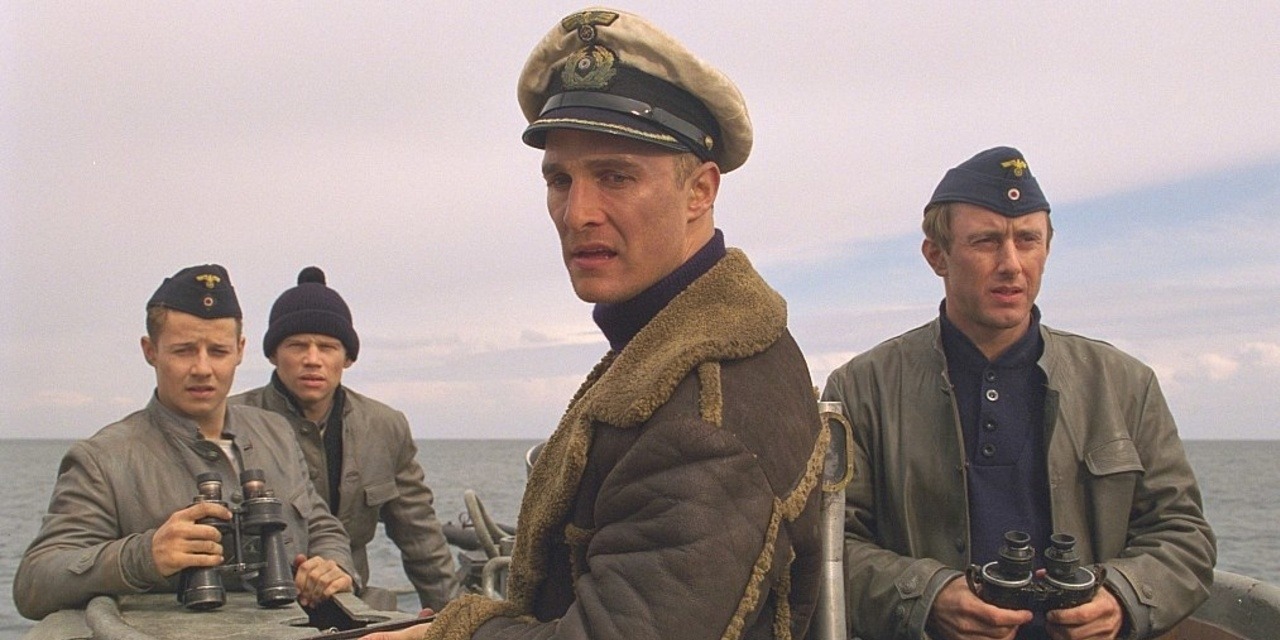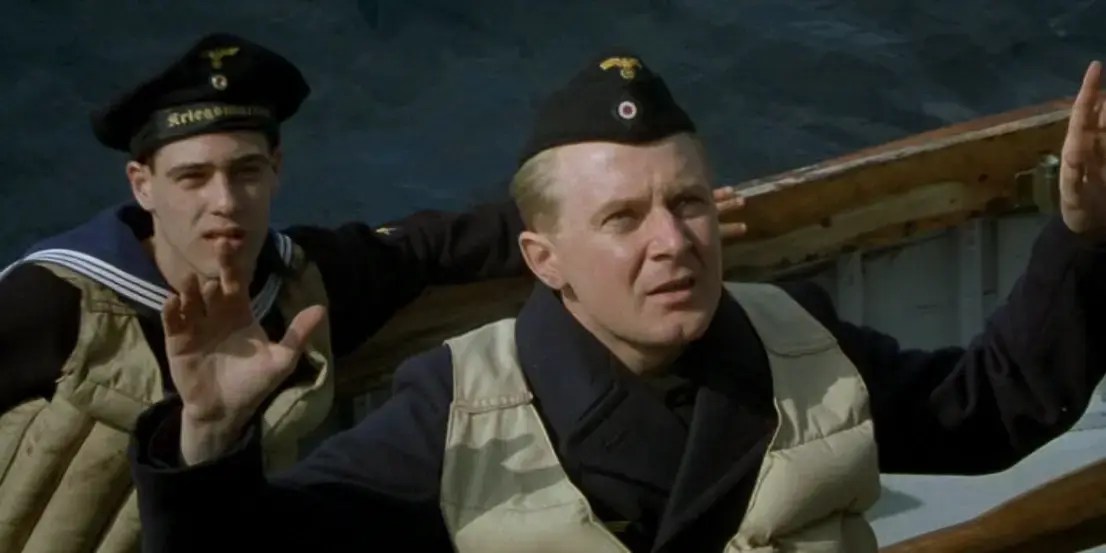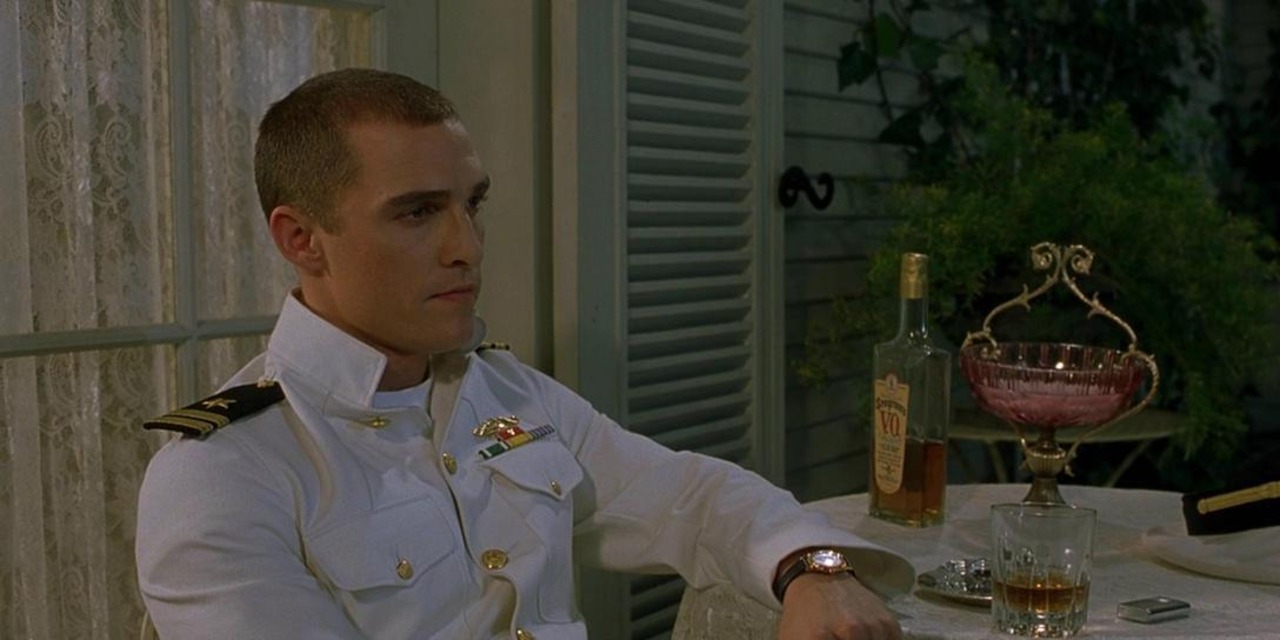Directed by Jonathan Mostow, ‘U-571’ is a 2000 war movie starring Matthew McConaughey, Bill Paxton, Harvey Keitel, Jon Bon Jovi, David Keith, and more. The movie puts the audience in the shoes of the valiant crew of the USS S-33, commanded by Lieutenant Andrew Tyler (McConaughey). Their mission is to don the guise of a German resupply U-boat and infiltrate a crippled German submarine, the U-571, to recover a German Enigma machine.
The film captures all the dangers and drama of naval combat, as well as the inner conflicts and unity of the crew as they execute a risky mission. If the film’s realistic portrayal of the dangers of naval combat makes you wonder whether the narrative of ‘U-571’ is rooted in reality, let us lay down the facts.
U-571: Blending Fiction with WWII Naval Battles
‘U-571’ is partially based on a true story. The film’s creator, Jonathan Mostow, found his muse in the historical events of May 9, 1941, where British forces orchestrated a daring raid on a German U-boat, absconding with the coveted Enigma machine. While ‘U-571’ undeniably draws inspiration from this true story, the filmmakers took heavy creative liberty for dramatic effect. The story is a fictional account of the raid by the British submarine HMS Bulldog. During the heated Battle of the Atlantic, HMS Bulldog, led by Lieutenant Commander Joe Baker-Cresswell, was on reconnaissance near Greenland.

On May 9, the German U-boat U-110 was detected when it was on the ocean floor servicing its anti-aircraft gun. The Bulldog advanced in an attacking position, but its torpedo failed to hit its target. U-110 responded by diving for safety. However, the Bulldog followed and pounded it with depth charges, badly damaging the U-boat. The German crew, realizing they couldn’t repair the ship in time, bailed off onto lifeboats, abandoning an Enigma machine and manuals needed to encrypt radio transmissions. Lieutenant Commander Baker-Cresswell directed his men to board the damaged and sinking U-110, even though there were potential traps set by the Germans.
The British sailors successfully acquired the Enigma machine and its accompanying manuals despite the perilous conditions. The crew of the Bulldog, now in control of the Enigma machine and manuals, dragged the doomed U-110 to calmer seas using a towline. Obtained Enigma documents were sent to the British code-breaking headquarters at Bletchley Park, where a talented group led by Alan Turing labored relentlessly to decipher German transmissions. Alan Turing’s life and work also served as the basis for the critically acclaimed film ‘The Imitation Game.’
When asked how he prepared for the movie, writer-director Jonathan Mostow stated during an interview that he had help from David Blame, who witnessed the historical event. Jonathan continued that Officer Balme was the one who first recovered an enigma machine from a German U-boat. On May 9, 1941, he led a naval battle that resulted in the sinking of U-110 by forcing it to the surface aboard his destroyer. Ramming the U-boat was regular practice to prevent the crew from boarding and discharging their weapons.
The British captain, nonetheless, saw the German crewmen just abandon the ship. He dispatched a boarding team to seize any intelligence resources they could get their hands on. Balme led the group on the dangerous trip, during which they had no idea whether a rival would ambush them or if the submarine would be booby-trapped. Balme discovered an empty boat and removed what he believed was an odd typewriter, not realizing he had returned with the much sought-after Enigma machine. Jonathan also stated that he had consulted with renowned historian Dr. David Kahn, who’s an expert on the Battle of the Atlantic.
Jonathan continued, “We consulted with Dr. Kahn, who has written several books on the subject and is considered pretty much the world’s expert on the Enigma,” reveals the director, “Basically, we wanted to ensure the way I depicted the machine was correct. He understood it was a movie and not a history lesson. To make a two-hour movie solely about code-breaking, you have a very boring training documentary. Nobody would watch that. Dr. Kahn helped me transform these elements into a way that a mass audience could understand and be informed in an entertaining way.”

Upon release, ‘U-571’ became the subject of debate and was criticized for fictionalizing a real event that changed the course of history. Even the former Prime Minister of the United Kingdom broke his silence and called the Hollywood rendition an “Affront” to the memories of the British soldiers who lost their lives fighting World War II. Chris Smith, a former secretary of culture, also spoke out against Hollywood’s treatment of the event, calling the film “a little galling.”
A group of Members of Parliament (MPs) highlighted that the soldiers from the boarding party received recognition and awards for their bravery. Even King George VI himself described their actions as one of the most significant events in history. They felt that Hollywood’s decision to ignore this aspect of the story was a disservice to the sacrifices and valor displayed by these individuals. Despite U-571’s claims, the crew members of HMS Bulldog were the ones who really seized the coding machine. They captured the German submarine U-110 and retrieved the Enigma machine and the codebooks.
When questioned why he made the changes he did, Jonathan said that the narrative had always been mostly made up and had little foundation in reality. Since there weren’t many films or documentaries on the event, he was worried that people would forget about it. Jonathan further added, “Sometimes, the best way to get the truth in something is through fiction, not through fact. Had I found a real-life incident that would have made for a great two-hour movie, I would have done that.”
The filmmaker expressed, “Some of these incidents are spectacularly fascinating but don’t necessarily deliver a three-act dramatic structure with continuity of protagonists, etc. I’m a student of history, and I wouldn’t want to be part of something that subverts the record, so I feel like I’m bringing a lot of attention to the historical record both in and around the movie.” He also defended himself when asked why he changed the year to 1942, saying, “I set it in 1942 and made it an American story because Hitler launched Operation Drumbeat against the U.S. Hitler’s stated intention was to so terrorize the American public that no one would volunteer for American merchant sea duty.”
Jonathan concluded, “For much of 1942, the East Coast beaches were closed. They had oil slicks and bodies washing ashore. You could stand on the beach in Cape Cod, Florida, or North Carolina and see ships blowing up. In April 1942, we were losing, on average, 30 ships a week right off our own coast. Thus, from the above-mentioned arguments, we infer that ‘U-571’ is partially based on the historical event of May 9, 1941, when the Britishers raided a German U-boat and recovered the Engima machine. The film was well-received for its action scenes and acting, but it sparked debate and condemnation for its inaccurate portrayal of the confiscation of the Enigma machine.
Read More: Best Submarine Movies of All Time

